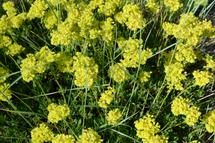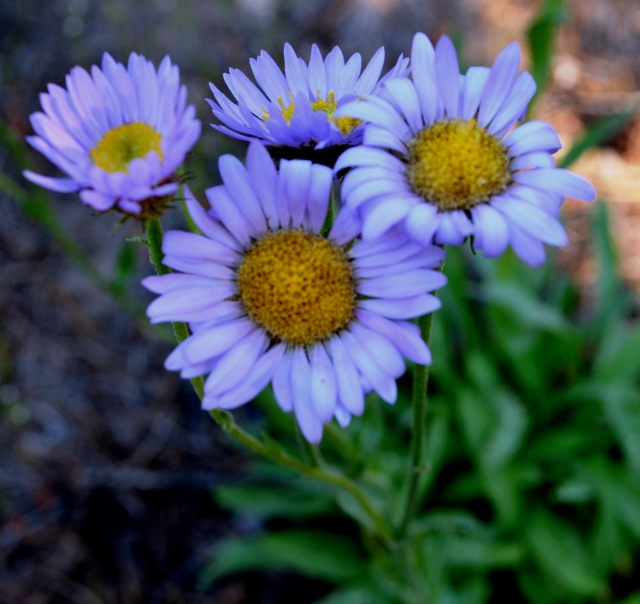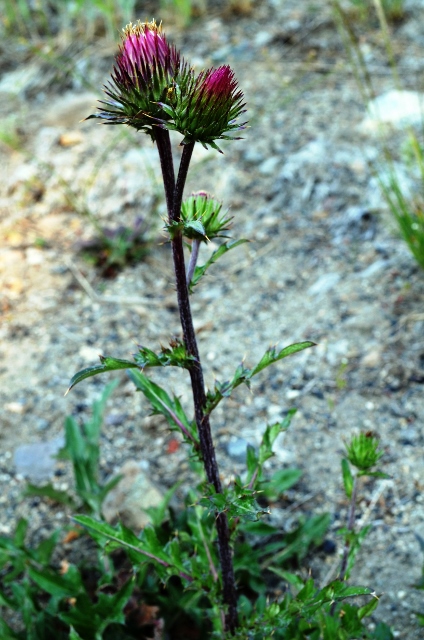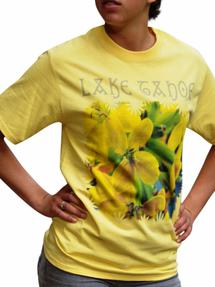saveourplanetearth.com
Call us: (775) 831-1331
More Tahoe Wildflowers
Tis the season of wildflowers, so we may as well continue looking at different species found on hiking trails and in the woods and along beaches —before they turn their energies from blooming to seed production.
In addition to the various guide books, I now have an on-line source to aid in identification of these wildflowers, thanks to a tip from John Roos, a 21-year resident of South Lake Tahoe who has explored the area and worked to identify plants around the lake.
John also taught a course on the natural history of Lake Tahoe at the Lake Tahoe Community College in South Lake Tahoe for several years and is a lifetime member of the California Native Plant Society (CNPS).
John directed me to the CNPS website which is cnps.org, where a visitor can find a wealth of information on native flowers, trees, succulents, shrubs, vines and grasses.
Pictures of specimens accompany maps of areas where found, as well as complete descriptions of the plant’s characteristics and preferred habitat.
Poke around on the site to find information about plants, native gardening, programs you can become involved in —there is even a rare plants section.
There is a nice selection of guide books available for purchase; the purchase of these from this site will benefit the organization, whose mission is to conserve California native plants and their natural habitats, and increase understanding, appreciation, and horticultural use of native plants.
I try to give back to these organizations that provide so much information on topics I’m passionate about; therefore I will be joining the CNPS and you can too. I will add to my collection of field guides as well.
I joined the Nevada Native Plant Society a couple of years ago and have since discovered that every state has one. Just type into the search bar on your browser the name of the state, followed by native plant society and access information on other region’s native plants.
Now that we are armed with an excellent on-line source for identifying our finds and we have our selection of field guides, we are ready to venture out into nature to find specimens to identify.
I am not good at this and I have much to learn so minus a knowledgeable person to drag along with us, here’s what we do. A camera, even a phone camera, is a helpful tool. Take close ups of the flower, the leaves, the underside of the leaves and the base of the plant. Take a shot or two of the entire plant.
If you have any artistic skills at all, or even if you don’t, sketch the plant and include measurements such as overall height, length of the leaves and width of the blossoms. Note any details you can think of: Where it is growing, do the leaves have serrated edges or “hair”, how many petals does the flower have. Are the leaves opposite each other, are they perpendicular, are they clustered—things like this.
Consult the guidebook you have carried along with you on your hike or bring your information back to the computer and begin your search.
And here is a request: If anyone knows of a good app for use on smart phones, please let me know so that I can share that information. I bought one for $5.99 called Wildflowers US but have not had success with it so far.
A flower that can be found on Mount Rose or other dry, rocky slopes and ridges at mid- to high-elevation is sulfur buckwheat. This is a perennial with ball-like clusters of flowers atop 12 inch, leafless stems.
Watch for Anderson’s thistle, a native perennial herb that grows up to 40 inches high. Its spiny leaves are longest at the base, becoming shorter and sparse at the top of the plant which can support more than one flower head. The head is lined with purple-tipped spines, attractive to hummingbirds.
A lovely yellow blossom, the Sierra wallflower is a tall plant topped with a cluster of 4-petaled flowers. It grows up to 3 feet tall at lake level, perhaps only a foot tall at higher elevations.
I like this flower so much, I designed T-shirts and tote bags adorned with it. Find these at tahoetshirtsandgifts.com or search for tahoeTshirt on Amazon.com.
I would love to help you identify samples you find out on your hikes. Send me photos and notes of your observations and together we can figure it out. I will write about our findings in future columns. Write to me at toree.saveourplanetearth@gmail.com.
Sulfur flower
Anderson's thistle
Fleabane
This beautiful poster featuring photos of 30 Sierra flowers is available on tahoetshirtsandgifts.com
Photographed, designed and produced by local photographer,
Jim Markle.
Here are some useful tools to aid you in your quest to identify flowers that you find on your walks in nature:
Visit this website: tahoecnps.org. This tip came from John Roos, who has lived at and explored the areas around Lake Tahoe for 21 years. He is a member of the California Native Plant Society.
Judy Mayorga, who has spent years studying wildflowers suggests an app for the smart phone: Sierra Nevada Wildflowers. Visit the app store on your phone and purchase it ($10) It is well worth it.
Locals and visitors alike will appreciate these fresh Tahoe designs, printed on cotton T-shirts, available on Amazon.com. Designed and produced by local, Toree Warfield under the name of tahoeTshirts.
See also tahoetshirtsandgifts.com for more Lake Tahoe items, including the Lake Tahoe scenic calendar 2016.







